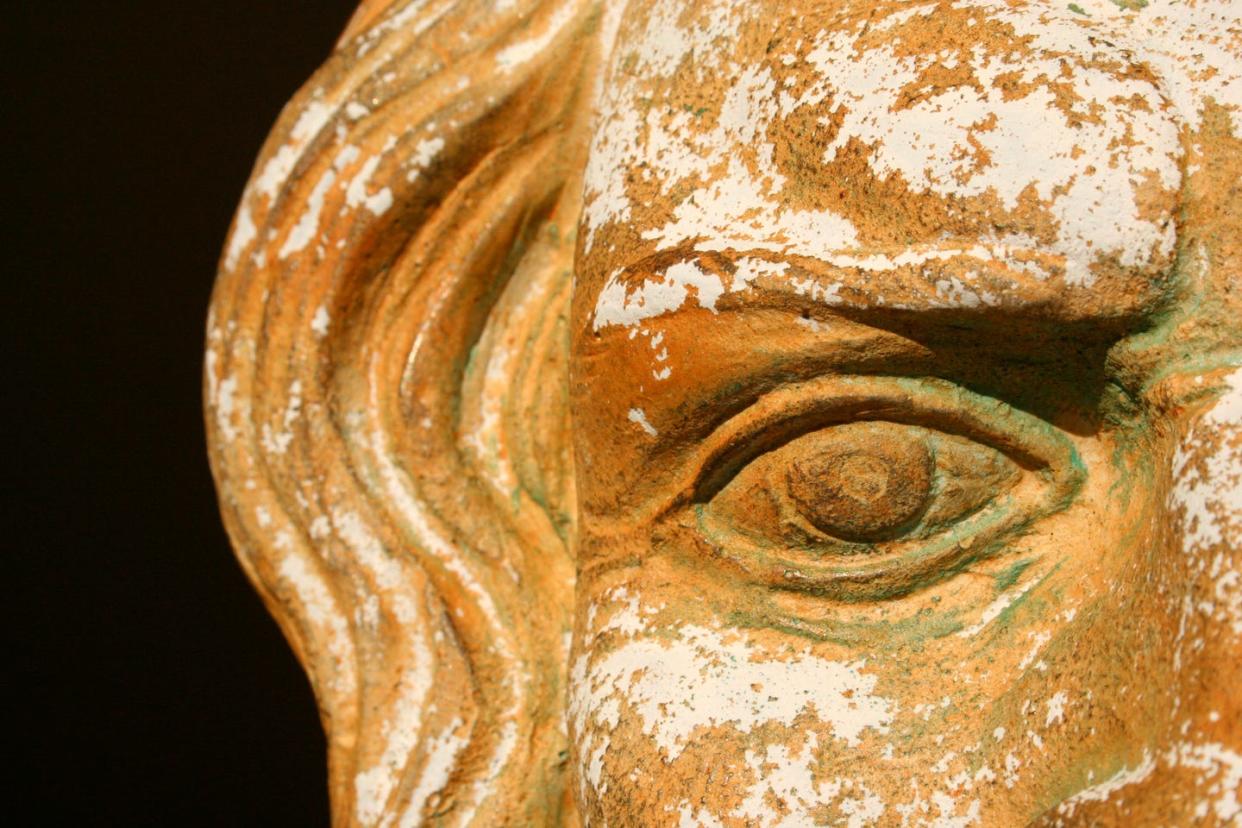Archaeologists Stumbled Upon the Missing Head of a 2,000-Year-Old Zeus Statue

Archaeologists found an ancient bust of the Greek god Zeus in western Turkey.
Located right near the remains of a temple dedicated to Aphrodite, the statue is a remnant of one of the Roman Empire’s hotbeds of artistry.
The city of Aphrodisias, because of its proximity to marble deposits, was a sculpture hub of the ancient world.
Most human heads, if they were to stand on their own, measure just under 10 inches tall. However, it seems that the ancient Greek god Zeus had a much bigger noggin. The king of the gods’ head stood 22 inches tall.
At least, a recently discovered marble bust of Zeus did. Archaeologists in Turkey discovered the loose Zeus head on land that now falls in the Western Turkey province of Aydin, but was once the ancient city of Aphrodisias (named for the Greek goddess of love, Aphrodite). In the time of Roman rule, the empire looked upon the city with favor—Julius Caesar himself claimed to be a descendent of Aphrodite (whom the Romans called Venus). A temple dedicated to the goddess was the first building constructed in what became the center of the city.
Aphrodisias'ta benzersiz bir keşif: Kolosal Zeus Başı!💫
Yüzyıllar sonra gün ışığıyla yeniden buluşan mermer baş, Yunan mitolojisinde en güçlü ve önemli tanrı olan Zeus’un ihtişamını sergiliyor.
Aphrodite Tapınağı'nın 50 metre batısında bulunan bu önemli eser, saç ve sakaldaki… pic.twitter.com/Re0C1JOwS7— Mehmet Nuri Ersoy (@MehmetNuriErsoy) July 30, 2024
According to a statement posted on social media by Turkey’s Minister of Culture and Tourism, Mehmet Nuri Ersoy, the statue head was found 164 feet from the remains of the Temple of Aphrodite, which itself was built in 3 B.C. Experts estimate that the statue of Zeus was built around the same time, if not a little bit later.
With its wide eyes, bushy eyebrows, and mostly missing nose, the marble head—which has since been cleaned of any remaining ancient dirt—is a striking piece of artwork. Unfortunately, however, the rest of Zeus appeared to be on the loose.
With a marble noggin over twice the size of the average human’s, it stands to reason the rest of the statue would tower well over 10 feet tall in all its finely hewn glory.
Except the head may have never even had a leg (or neck, or torso) to stand on.
The back of Zeus’s marble head appears to be attached to the makings of an architectural console—a decorative bracket used to support a shelf or windowhead. This could mean that, instead of a full representation of Zeus, the unearthed head is just... a head (albeit an exquisitely crafted one). But the quality craftsmanship isn’t a surprise, considering its Aphrodisias origins.
The ancient city, which sprung up around 3 B.C., became a hub for sculptors because of its proximity to rich marble quarries. As more and more sculptors went to Aphrodisias to work, more and more finely crafted marble statues (and raw marble) were sent out across both the Roman Empire and the rest of the Hellenistic world. This allowed for the city to amass a great deal of wealth. In fact, according to Arkeonews, The artisans of Aphrodisias’ portrait sculptures, building facades, and representations of the gods were highly sought-after across the empire as a result of the caliber and sophistication of their craftsmanship.
But, unfortunately, all good things must come to an end. Aphrodisias’ status as an artistic hotbed of the empire was short-lived, and ended around 7 A.D. after an earthquake from which the city never recovered. It was then sacked numerous times and, by the middle ages, Turkey had assumed control.
Still, the recovered Zeus bust serves as a historical reminder of the ancient city’s wealth of artistic talent and role in the sprawling empire.
You Might Also Like
